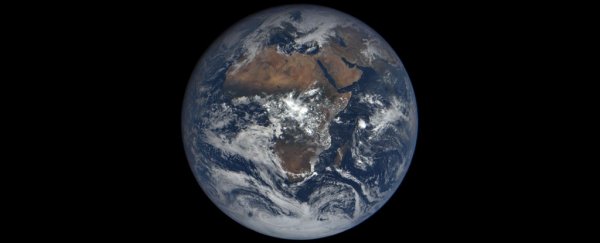The so-called 'Garden of Ediacara', a period of peace and tranquility lasting for millions of years in which Earth's first known complex multicellular organisms thrived, came to an end as a result of the planet's first mass extinction some 540 million years ago.
But it wasn't a shower of meteorites or the eruption of volcanoes that wiped the Ediacaran biota off the face of the planet. According to recent research, it was the emergence of new life forms – animals – and the changes they brought about to the environment that triggered the extinction.
"People have been slow to recognise that biological organisms can also drive mass extinction," said Simon Darroch, assistant professor of earth and environmental sciences at Vanderbilt University in the US. "But our comparative study of several communities of Ediacarans, the world's first multicellular organisms, strongly supports the hypothesis that it was the appearance of complex animals capable of altering their environments, which we define as 'ecosystem engineers,' that resulted in the Ediacaran's disappearance."
Ediacarans themselves emerged about 600 million years ago, evolving from microbes. They were a largely passive and immobile form of marine life, and the various forms they took – shaped like fronds, discs, and tubes – can be seen in fossilised remnants across the world. However, unlike other animals, the fossilised remnants are unusually few and far between.
"We don't know very much about the Ediacarans because they did not produce shells or skeletons," said Darroch. "As a result, almost all we know about them comes from imprints of their shapes preserved in sand or ash."
By examining these imprints at the youngest known Ediacaran fossil site – Farm Swartpunt, in southern Namibia – the researchers found evidence suggesting that the impact of the earliest animals on the Ediacarans, during a period known as the Cambrian explosion, was taking its toll. These earliest animals went on to form the animal families we know today, including vertebrates, molluscs, arthropods, jellyfish and others.
"We found that the diversity of [Ediacaran] species at this site was much lower, and there was evidence of greater ecological stress, than at comparable sites that are 10 million to 15 million years older," said Darroch. "These new [animal] species were 'ecological engineers' who changed the environment in ways that made it more and more difficult for the Ediacarans to survive."
If the researchers are right in their hypothesis, it's a bittersweet revelation that such a potent warning sign of organism-produced extinction was effectively lying under our noses all this time – for millions of years no less – just waiting to be discovered. Scientists say we're entering a new mass extinction right now, and one in which human activity is thought to be largely responsible.
"There is a powerful analogy between Earth's first mass extinction and what is happening today," said Darroch. "The end-Ediacaran extinction shows that the evolution of new behaviours can fundamentally change the entire planet, and we are the most powerful 'ecosystem engineers' ever known."
The findings are published in Proceedings of the Royal Society B.
